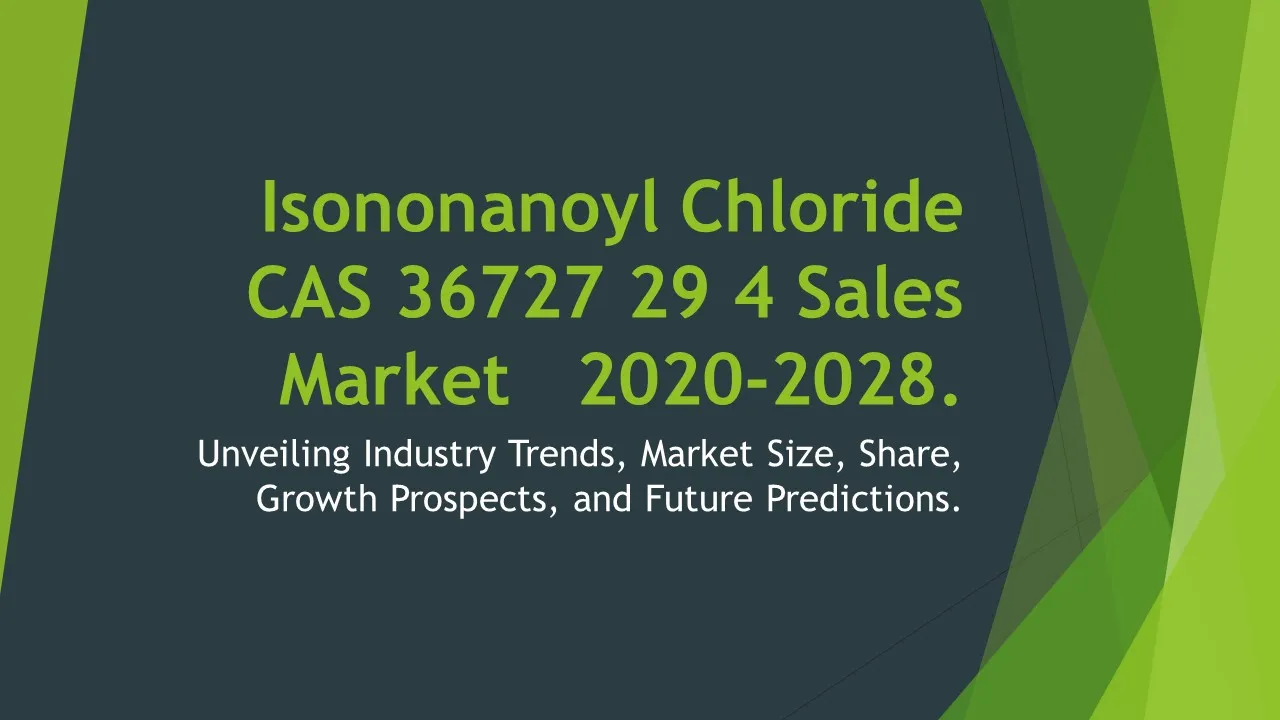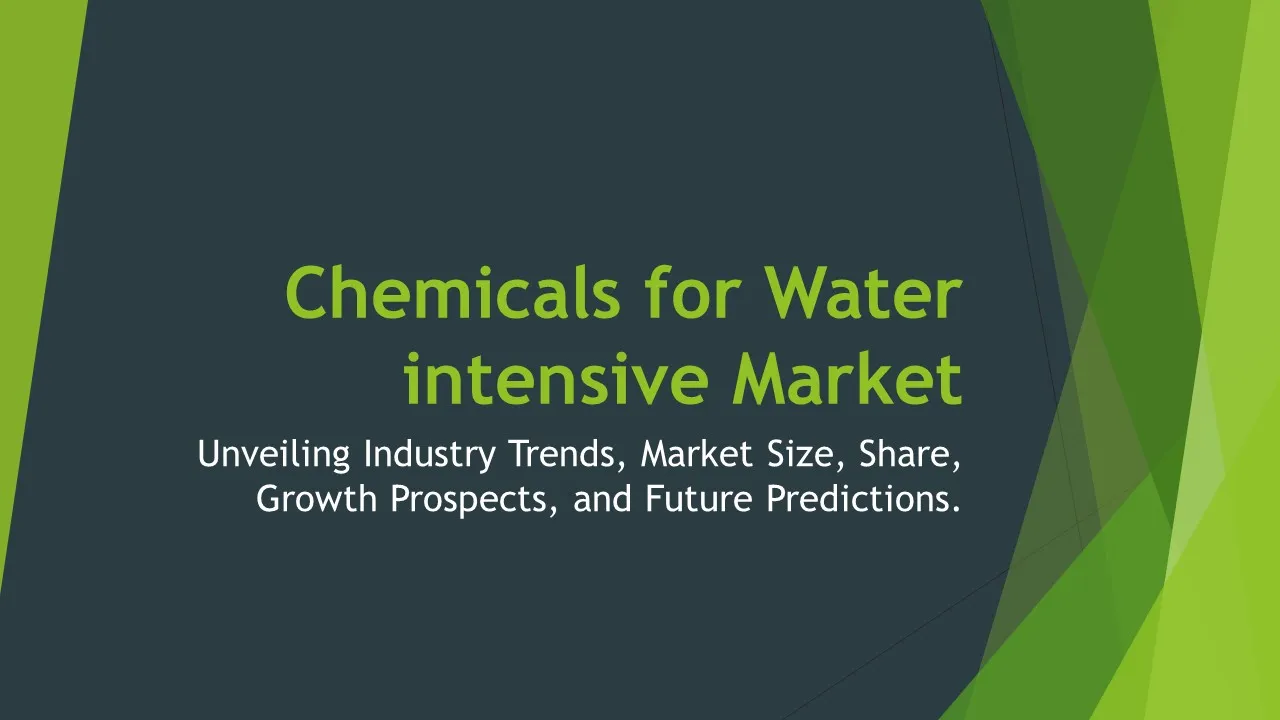Piperonyl Butoxide PBO
Piperonyl Butoxide PBO Market Segments - by Product Type (Liquid Form, Powder Form, Aerosol Form, Emulsifiable Concentrate Form, ULV Form), Application (Insecticide, Fungicide, Herbicide, Biocide, and Others), Distribution Channel (Online Stores, Agrochemical Suppliers, Direct Sales, Retail Stores, and Others), Ingredient Type (Pyrethroids, Carbamates, Organophosphates, Neonicotinoids, and Others), and Region (North America, Europe, Asia Pacific, Latin America, Middle East & Africa) - Global Industry Analysis, Growth, Share, Size, Trends, and Forecast 2025-2035
- Report Preview
- Table Of Content
- Segments
- Methodology
Piperonyl Butoxide PBO Market Outlook
The global Piperonyl Butoxide (PBO) market was valued at approximately USD 500 million in 2023 and is projected to reach around USD 850 million by 2035, expanding at a robust CAGR of about 6.5% during the forecast period. This growth can be attributed to the increasing demand for effective pest control solutions in agriculture and the rising prevalence of vector-borne diseases which necessitate innovative insecticide formulations. Furthermore, the expansion of the agricultural sector, coupled with heightened awareness around sustainable farming practices, is driving the adoption of PBO as an indispensable synergist in pesticide formulations. The ability of PBO to enhance the efficacy of numerous active ingredients has established its position as a crucial component in the agricultural and pest control sectors, significantly contributing to the overall growth of the market. Additionally, regulatory support and the trend towards organic farming are creating new opportunities for the use of PBO in various applications.
Growth Factor of the Market
The market for Piperonyl Butoxide is experiencing significant growth due to a confluence of factors that are reshaping pest management practices globally. Firstly, the increasing agricultural output required to feed a growing global population is resulting in heightened demand for effective pest control solutions, which PBO facilitates through its synergistic properties. Secondly, the rising incidence of diseases such as malaria and dengue, which are transmitted by insects, has propelled the demand for insecticides that incorporate PBO, as it enhances the effectiveness of these products. Additionally, ongoing advancements in formulation technology are enabling the development of more efficient and environmentally friendly pest control products, further driving the market forward. As consumers and regulatory bodies increasingly prioritize eco-friendly solutions, PBO’s compatibility with natural pesticides positions it favorably within the market. Lastly, the growing trend of integrated pest management (IPM) practices is also bolstering the need for PBO, as it plays a critical role in optimizing the overall efficacy of pest control strategies.
Key Highlights of the Market
- The Piperonyl Butoxide market is projected to grow at a CAGR of 6.5% from 2023 to 2035.
- North America is expected to hold a significant market share owing to advanced agricultural practices.
- Liquid form of PBO is anticipated to dominate the product type segment during the forecast period.
- Increasing use of PBO in insecticide applications is a key growth driver.
- Online distribution channels are witnessing significant growth due to the rise in e-commerce.
By Product Type
Liquid Form:
The liquid form of Piperonyl Butoxide is widely used in various agricultural applications due to its ease of use and efficient formulation. This form allows for precise dosing and application, ensuring optimal pest control in diverse environments. Liquid PBO is predominantly employed in insecticide formulations, enhancing the effectiveness of active ingredients against a broad spectrum of pests. The convenience of liquid applications also aligns well with the modern farming practices that prioritize efficiency and effectiveness. Furthermore, as farmers increasingly seek solutions that maximize yield while minimizing environmental impact, the liquid form of PBO emerges as an ideal choice, bolstering its demand in the market.
Powder Form:
Powdered Piperonyl Butoxide is another significant product type that is gaining traction in the market. This formulation is often preferred for its stability and extended shelf life, making it suitable for various applications in agriculture and pest control. The powder form can be easily mixed with other formulations, allowing for flexibility in pest management strategies. Its use in combination with other pesticides enhances their effectiveness, especially in challenging pest control scenarios. Moreover, powdered PBO is commonly utilized in home gardening and professional pest control services, thereby expanding its application avenues. The increasing trend of DIY pest control solutions among consumers is also contributing to the rising demand for powdered formulations.
Aerosol Form:
Aerosolized Piperonyl Butoxide offers convenience and ease of application, making it a popular choice among both professional pest control operators and household consumers. This form allows for targeted delivery of PBO in a fine mist, which ensures effective coverage over large areas. The aerosol form is particularly advantageous for indoor pest control applications, as it minimizes the risk of overspray and unintended contamination. As the demand for user-friendly pest control solutions continues to rise, the aerosol form of PBO is positioned favorably in the market. Additionally, the growth of the urban population and the subsequent increase in pest-related issues in residential areas enhance the prospects for aerosolized PBO products.
Emulsifiable Concentrate Form:
The emulsifiable concentrate form of Piperonyl Butoxide is widely utilized due to its ability to mix readily with water and other solvents, making it versatile for various agricultural applications. This formulation is particularly effective in field applications, where it can be easily combined with other agricultural chemicals to enhance pest control efficacy. Emulsifiable concentrates provide improved penetration and performance in pest management, resulting in higher crop yields. Additionally, the formulation's compatibility with various application methods, including spraying and drenching, makes it attractive to farmers and agricultural professionals. The growing emphasis on effective pest management strategies in agriculture is expected to drive the demand for emulsifiable concentrates in the coming years.
ULV Form:
The Ultra Low Volume (ULV) form of Piperonyl Butoxide is gaining prominence for its efficiency in pest control applications, particularly in vector control programs for diseases spread by insects. This formulation allows for the application of highly concentrated solutions in very small quantities, minimizing environmental impact while maximizing efficacy. ULV applications are ideal for large-scale pest control operations, including agricultural fields and public health initiatives. As governments and organizations increasingly focus on controlling insect-borne diseases, the demand for ULV PBO products is on the rise. This form's ability to cover extensive areas quickly and effectively enhances its attractiveness among pest control professionals and agricultural users alike.
By Application
Insecticide:
The application of Piperonyl Butoxide as an insecticide is one of the most significant segments driving its market growth. PBO enhances the efficacy of various insecticides by inhibiting the enzymes that insects produce to detoxify these chemicals, thus allowing for lower dosages of active ingredients while achieving the desired pest control results. This synergistic effect not only improves the effectiveness of insecticides but also helps in reducing resistance development among pest populations, making PBO an essential component in effective integrated pest management strategies. The increasing threat of pest resistance to conventional insecticides is prompting farmers and pest control professionals to seek effective solutions like PBO, propelling this application segment forward.
Fungicide:
Piperonyl Butoxide is also used in fungicide formulations, although this application is relatively less common than its use in insecticides. The addition of PBO in fungicide products enhances their overall performance against pathogenic fungi, thereby improving crop yield and quality. As the agricultural sector increasingly focuses on sustainable practices, the inclusion of PBO in fungicides is gaining attention, particularly in organic farming where it can serve as a natural synergist. The need for effective disease management in crops is driving the adoption of PBO-containing fungicides, thereby contributing to market growth in this segment.
Herbicide:
The use of Piperonyl Butoxide in herbicide formulations is emerging as a promising application area. PBO's capability to enhance the performance of various active herbicide ingredients facilitates more effective weed control, which is crucial for maintaining crop health and optimizing yields. As the agricultural sector grapples with the challenges of herbicide-resistant weed species, the synergistic properties of PBO are becoming increasingly valuable. Incorporating PBO into herbicide formulations may reduce the overall quantity of herbicides needed, aligning with sustainable farming practices and regulatory trends. The expanding use of herbicides across various crops is likely to promote the demand for PBO in this application area.
Biocide:
Piperonyl Butoxide is also utilized in biocide applications, which encompass a range of products designed to control harmful organisms across various environments. The effectiveness of PBO in enhancing the impact of biocides is crucial in settings such as public health, agriculture, and food processing. The growing concerns over hygiene and the demand for effective pest control measures in residential and commercial properties are contributing to the increasing use of PBO in biocide formulations. Furthermore, as the demand for environmentally friendly pest control solutions rises, PBO's role in biocides is likely to expand, catering to a market that seeks efficacy along with minimal environmental impact.
Others:
In addition to the main applications, Piperonyl Butoxide finds utility in various other segments, including veterinary medicine and household pest control products. The versatility of PBO allows it to be incorporated into formulations designed for diverse applications, capitalizing on its synergistic properties. The growing awareness of pest-related health threats in both domestic and animal care settings is driving the demand for PBO in these additional applications. As consumers increasingly prioritize health and safety in their choice of pest control products, the market for PBO in these segments is expected to see substantial growth, further diversifying its application landscape.
By Distribution Channel
Online Stores:
The rise of e-commerce has significantly transformed the distribution of Piperonyl Butoxide products, with online stores emerging as a critical channel. The convenience offered by online shopping, along with access to a broad range of products, is driving consumers toward purchasing PBO formulations online. This distribution channel is particularly appealing to small-scale farmers and DIY pest control enthusiasts who seek easy access to various pest management solutions without the constraints of physical store locations. The growing trend of online shopping, coupled with increased availability of technical information and product reviews, is enhancing consumer confidence in purchasing pesticide products through digital platforms, thereby propelling the market forward.
Agrochemical Suppliers:
Agrochemical suppliers remain a vital distribution channel for Piperonyl Butoxide, particularly in the agricultural sector. These suppliers play an essential role in providing farmers with the necessary pest control solutions and technical support required for effective crop management. The longstanding relationships between farmers and local agrochemical suppliers facilitate trust and reliability in sourcing products such as PBO. As agriculture continues to evolve and adapt to modern challenges, the expertise offered by agrochemical suppliers in product selection and application techniques ensures that PBO maintains a strong presence in the market through this channel.
Direct Sales:
Direct sales channels are also significant in the Piperonyl Butoxide market, especially for larger agricultural enterprises that prefer direct relationships with manufacturers. This approach enables manufacturers to provide tailored solutions and customized support to meet specific agricultural needs. Furthermore, direct sales allow for better communication regarding product application and safety, fostering consumer loyalty and satisfaction. As agricultural practices become more specialized, the demand for direct sales of PBO products is expected to grow, catering to the unique requirements of various farming operations.
Retail Stores:
Retail stores, including garden centers and agricultural supply shops, are traditional yet vital distribution channels for Piperonyl Butoxide products, particularly for home and small-scale applications. These physical stores allow consumers to access products immediately, offering the opportunity for face-to-face consultations with store staff who can provide valuable advice on pest control solutions. The convenience of purchasing PBO formulations in retail outlets caters to consumers seeking immediate solutions for pest issues in their homes or gardens. Despite the rise of e-commerce, retail stores continue to play an essential role in the overall distribution landscape of PBO.
Others:
In addition to the primary distribution channels mentioned above, various other channels are emerging, such as agricultural cooperatives and specialty pest control service providers. These avenues are gaining traction as they offer consumers specialized products and insights into effective pest management practices. The emergence of these alternative channels reflects the shifting landscape of the pest control market, with a focus on personalized service and tailored solutions. As consumers increasingly seek expert advice and support in their pest control endeavors, these distribution channels will likely contribute to the growth of the Piperonyl Butoxide market.
By Ingredient Type
Pyrethroids:
Piperonyl Butoxide is widely used in conjunction with pyrethroids, a popular class of insecticides known for their effectiveness against a wide range of pests. The combination of PBO with pyrethroid formulations enhances the potency of these pesticides, improving their knockdown and mortality rates. This synergy is particularly valuable in agricultural settings where pest resistance is a growing concern. The increased acceptance of integrated pest management practices is promoting the use of PBO with pyrethroids, as farmers seek to optimize pest control while minimizing environmental impact. The growing demand for pyrethroid-based solutions in both agricultural and residential pest control applications is expected to drive the PBO market in this ingredient type segment.
Carbamates:
The use of Piperonyl Butoxide in carbamate-based formulations is notable due to its ability to augment the effectiveness of these insecticides. Carbamates are widely used in agriculture and household pest control, and the inclusion of PBO enhances their overall performance against targeted pests. The synergistic effect of PBO with carbamates helps to lower the required dosage, resulting in reduced chemical application while maintaining efficacy. As regulatory pressures increase regarding pesticide usage, the trend toward using PBO in carbamate formulations is likely to gain momentum, providing farmers and pest control operators with effective solutions.
Organophosphates:
Piperonyl Butoxide also plays a significant role in enhancing the efficacy of organophosphate insecticides, which are known for their broad-spectrum activity. The addition of PBO to organophosphate formulations improves their overall performance, particularly in challenging pest management scenarios. This synergy is crucial in scenarios where growers aim to mitigate pest resistance and maximize crop yield. The demand for organophosphate-based products in agricultural applications, coupled with the need for effective pest control strategies, is contributing to the market growth of PBO in this ingredient type segment. As awareness of pest resistance continues to rise, the combination of PBO with organophosphates is expected to remain a key focus for pest management.
Neonicotinoids:
The incorporation of Piperonyl Butoxide into neonicotinoid formulations is gaining traction given the effectiveness of neonicotinoids in targeting sap-sucking pests. PBO enhances the activity of these insecticides, providing an additional layer of effectiveness in pest management. As the agriculture industry increasingly seeks solutions that are both effective and environmentally responsible, the synergy between PBO and neonicotinoids presents a favorable option for sustainable pest control. This growing trend towards the use of PBO with neonicotinoids is likely to bolster the overall demand for PBO in the ingredient type segment, particularly in specialty crops where targeted pest control is essential.
Others:
Beyond the aforementioned ingredient types, Piperonyl Butoxide can also complement other active ingredients in various formulations, contributing to its versatility in the pest control market. This category includes botanical pesticides and biopesticides, which are gaining popularity as consumers and agricultural stakeholders search for natural and less toxic alternatives to synthetic chemicals. The ability of PBO to enhance the effectiveness of these alternative formulations aligns well with the increasing trend toward organic farming and integrated pest management practices. As the demand for eco-friendly pest control solutions continues to rise, the versatility of PBO in various formulations will likely contribute to its sustained market growth across different ingredient types.
By Region
The Piperonyl Butoxide market is witnessing diverse growth patterns across various regions, with North America leading the way. The region is projected to account for approximately 35% of the global market share by 2035, driven by advanced agricultural practices and the increasing demand for effective pest control solutions. The presence of established agrochemical companies and continuous innovation in pesticide formulations further bolster the market in North America. Additionally, stringent regulations regarding pesticide usage are encouraging the adoption of synergistic products like PBO, making it an essential component of pest management strategies. The region is expected to grow at a CAGR of 6.0%, reflecting the ongoing trend of integrating eco-friendly solutions into agricultural practices.
Europe is another significant market for Piperonyl Butoxide, anticipated to hold around 25% of the global market share by 2035. The European market is characterized by a stringent regulatory environment aimed at promoting sustainable agricultural practices. The increasing incidence of pest resistance to conventional insecticides is driving the need for effective synergists like PBO in the region. Additionally, growing consumer preferences for organic produce are further fueling the demand for eco-friendly pest control solutions, including PBO formulations. The market in Europe is expected to witness a CAGR of 7.0%, reflecting the rising focus on sustainable farming practices and integrated pest management approaches.
Opportunities
The Piperonyl Butoxide market is poised for significant opportunities in the coming years, primarily driven by the increasing focus on sustainable agricultural practices. As global awareness around the impacts of chemical pesticides grows, there is a rising demand for eco-friendly and effective pest control solutions. PBO, with its ability to enhance the efficacy of both synthetic and natural pesticides, is well-positioned to capture this growing market segment. Furthermore, the integration of PBO into organic farming practices presents a unique opportunity to cater to the increasing consumer shift towards organic products. This trend is supported by the growing regulatory frameworks that encourage the use of sustainable pest management strategies, allowing PBO to play a crucial role in achieving these objectives.
Moreover, the rising incidence of vector-borne diseases presents further opportunities for the Piperonyl Butoxide market. As public health initiatives seek effective solutions for controlling disease-carrying insects, the demand for insecticides incorporating PBO is likely to increase. The ability of PBO to enhance the performance of insecticides in vector control programs can significantly contribute to the overall effectiveness of these initiatives. Additionally, the ongoing research and development activities focused on formulating new PBO-based products open up avenues for innovation in pest management strategies. As agricultural and health sectors continue to prioritize effective and environmentally safe solutions, the market for PBO is expected to flourish.
Threats
Despite the promising growth prospects, the Piperonyl Butoxide market faces several threats that could impede its progress. One major concern is the increasing scrutiny from regulatory bodies regarding the use of chemical pesticides, including PBO. As governments and organizations impose stricter regulations and bans on certain chemicals, the market for PBO could be adversely affected. Moreover, public perception of chemical pesticides plays a significant role in influencing consumer behavior, and any negative perceptions related to PBO could hinder its adoption in various applications. Additionally, the emergence of alternative pest control methods, such as biological pest control and integrated pest management, may pose a threat to the market as consumers seek out more sustainable solutions.
Another challenge for the Piperonyl Butoxide market is the potential for pest resistance. As pest populations adapt to chemical control measures, the effectiveness of PBO in enhancing insecticides could diminish over time. This resistance development can lead to increased pest populations and reduced crop yields, ultimately affecting the demand for PBO in pest management strategies. Furthermore, fluctuations in the supply chain for raw materials used in the production of PBO can lead to price volatility, impacting manufacturers' ability to maintain consistent production levels. As these challenges persist, market players must adapt their strategies to mitigate potential threats and ensure sustainable growth.
Competitor Outlook
- BASF SE
- Syngenta AG
- FMC Corporation
- ADAMA Agricultural Solutions Ltd.
- Nufarm Limited
- Sumitomo Chemical Co., Ltd.
- Cheminova A/S
- American Vanguard Corporation
- Koppert Biological Systems
- UPL Limited
- Bayer AG
- Dow AgroSciences LLC
- Arysta LifeScience Corporation
- Takeda Pharmaceutical Company Limited
- Solvay S.A.
The competitive landscape of the Piperonyl Butoxide market is characterized by the presence of numerous key players who are actively engaged in product development, strategic partnerships, and market expansion initiatives. Companies such as BASF SE and Syngenta AG dominate the market, leveraging their extensive research and development capabilities to innovate and enhance their product offerings. These companies are focusing on synergistic formulations that integrate PBO with other active ingredients to provide comprehensive pest management solutions. The emphasis on sustainability and eco-friendly products is also shaping the competitive strategies of these organizations, as they strive to meet the evolving demands of consumers and regulatory bodies.
Additionally, FMC Corporation and ADAMA Agricultural Solutions Ltd. are notable players contributing to market growth through their diverse portfolios of pesticide products that include PBO-based formulations. These companies are capitalizing on the increasing awareness of pest resistance and are promoting the benefits of using PBO to enhance the efficacy of existing insecticides. The focus on education and awareness among farmers regarding the advantages of using PBO in pest management is crucial for driving adoption and expanding market reach. Furthermore, mergers and acquisitions within the industry are expected to create synergies that enhance the competitive positioning of these companies.
Market players like Nufarm Limited and Sumitomo Chemical Co., Ltd. are also actively investing in research and development to explore new applications for Piperonyl Butoxide, further diversifying their product offerings. The increasing collaboration between agricultural producers and research institutions is fostering innovation in pest control approaches, leading to the development of novel PBO formulations that cater to specific crops and pest challenges. Moreover, as the agricultural landscape continues to evolve, these companies are positioning themselves to address the challenges of climate change and its impact on pest populations, thereby ensuring the long-term sustainability of their operations and the Piperonyl Butoxide market.
1 Appendix
- 1.1 List of Tables
- 1.2 List of Figures
2 Introduction
- 2.1 Market Definition
- 2.2 Scope of the Report
- 2.3 Study Assumptions
- 2.4 Base Currency & Forecast Periods
3 Market Dynamics
- 3.1 Market Growth Factors
- 3.2 Economic & Global Events
- 3.3 Innovation Trends
- 3.4 Supply Chain Analysis
4 Consumer Behavior
- 4.1 Market Trends
- 4.2 Pricing Analysis
- 4.3 Buyer Insights
5 Key Player Profiles
- 5.1 BASF SE
- 5.1.1 Business Overview
- 5.1.2 Products & Services
- 5.1.3 Financials
- 5.1.4 Recent Developments
- 5.1.5 SWOT Analysis
- 5.2 Bayer AG
- 5.2.1 Business Overview
- 5.2.2 Products & Services
- 5.2.3 Financials
- 5.2.4 Recent Developments
- 5.2.5 SWOT Analysis
- 5.3 Solvay S.A.
- 5.3.1 Business Overview
- 5.3.2 Products & Services
- 5.3.3 Financials
- 5.3.4 Recent Developments
- 5.3.5 SWOT Analysis
- 5.4 Syngenta AG
- 5.4.1 Business Overview
- 5.4.2 Products & Services
- 5.4.3 Financials
- 5.4.4 Recent Developments
- 5.4.5 SWOT Analysis
- 5.5 UPL Limited
- 5.5.1 Business Overview
- 5.5.2 Products & Services
- 5.5.3 Financials
- 5.5.4 Recent Developments
- 5.5.5 SWOT Analysis
- 5.6 Cheminova A/S
- 5.6.1 Business Overview
- 5.6.2 Products & Services
- 5.6.3 Financials
- 5.6.4 Recent Developments
- 5.6.5 SWOT Analysis
- 5.7 Nufarm Limited
- 5.7.1 Business Overview
- 5.7.2 Products & Services
- 5.7.3 Financials
- 5.7.4 Recent Developments
- 5.7.5 SWOT Analysis
- 5.8 FMC Corporation
- 5.8.1 Business Overview
- 5.8.2 Products & Services
- 5.8.3 Financials
- 5.8.4 Recent Developments
- 5.8.5 SWOT Analysis
- 5.9 Dow AgroSciences LLC
- 5.9.1 Business Overview
- 5.9.2 Products & Services
- 5.9.3 Financials
- 5.9.4 Recent Developments
- 5.9.5 SWOT Analysis
- 5.10 Koppert Biological Systems
- 5.10.1 Business Overview
- 5.10.2 Products & Services
- 5.10.3 Financials
- 5.10.4 Recent Developments
- 5.10.5 SWOT Analysis
- 5.11 Sumitomo Chemical Co., Ltd.
- 5.11.1 Business Overview
- 5.11.2 Products & Services
- 5.11.3 Financials
- 5.11.4 Recent Developments
- 5.11.5 SWOT Analysis
- 5.12 American Vanguard Corporation
- 5.12.1 Business Overview
- 5.12.2 Products & Services
- 5.12.3 Financials
- 5.12.4 Recent Developments
- 5.12.5 SWOT Analysis
- 5.13 Arysta LifeScience Corporation
- 5.13.1 Business Overview
- 5.13.2 Products & Services
- 5.13.3 Financials
- 5.13.4 Recent Developments
- 5.13.5 SWOT Analysis
- 5.14 ADAMA Agricultural Solutions Ltd.
- 5.14.1 Business Overview
- 5.14.2 Products & Services
- 5.14.3 Financials
- 5.14.4 Recent Developments
- 5.14.5 SWOT Analysis
- 5.15 Takeda Pharmaceutical Company Limited
- 5.15.1 Business Overview
- 5.15.2 Products & Services
- 5.15.3 Financials
- 5.15.4 Recent Developments
- 5.15.5 SWOT Analysis
- 5.1 BASF SE
6 Market Segmentation
- 6.1 Piperonyl Butoxide PBO Market, By Application
- 6.1.1 Insecticide
- 6.1.2 Fungicide
- 6.1.3 Herbicide
- 6.1.4 Biocide
- 6.1.5 Others
- 6.2 Piperonyl Butoxide PBO Market, By Product Type
- 6.2.1 Liquid Form
- 6.2.2 Powder Form
- 6.2.3 Aerosol Form
- 6.2.4 Emulsifiable Concentrate Form
- 6.2.5 ULV Form
- 6.3 Piperonyl Butoxide PBO Market, By Ingredient Type
- 6.3.1 Pyrethroids
- 6.3.2 Carbamates
- 6.3.3 Organophosphates
- 6.3.4 Neonicotinoids
- 6.3.5 Others
- 6.4 Piperonyl Butoxide PBO Market, By Distribution Channel
- 6.4.1 Online Stores
- 6.4.2 Agrochemical Suppliers
- 6.4.3 Direct Sales
- 6.4.4 Retail Stores
- 6.4.5 Others
- 6.1 Piperonyl Butoxide PBO Market, By Application
7 Competitive Analysis
- 7.1 Key Player Comparison
- 7.2 Market Share Analysis
- 7.3 Investment Trends
- 7.4 SWOT Analysis
8 Research Methodology
- 8.1 Analysis Design
- 8.2 Research Phases
- 8.3 Study Timeline
9 Future Market Outlook
- 9.1 Growth Forecast
- 9.2 Market Evolution
10 Geographical Overview
- 10.1 Europe - Market Analysis
- 10.1.1 By Country
- 10.1.1.1 UK
- 10.1.1.2 France
- 10.1.1.3 Germany
- 10.1.1.4 Spain
- 10.1.1.5 Italy
- 10.1.1 By Country
- 10.2 Asia Pacific - Market Analysis
- 10.2.1 By Country
- 10.2.1.1 India
- 10.2.1.2 China
- 10.2.1.3 Japan
- 10.2.1.4 South Korea
- 10.2.1 By Country
- 10.3 Latin America - Market Analysis
- 10.3.1 By Country
- 10.3.1.1 Brazil
- 10.3.1.2 Argentina
- 10.3.1.3 Mexico
- 10.3.1 By Country
- 10.4 North America - Market Analysis
- 10.4.1 By Country
- 10.4.1.1 USA
- 10.4.1.2 Canada
- 10.4.1 By Country
- 10.5 Middle East & Africa - Market Analysis
- 10.5.1 By Country
- 10.5.1.1 Middle East
- 10.5.1.2 Africa
- 10.5.1 By Country
- 10.6 Piperonyl Butoxide PBO Market by Region
- 10.1 Europe - Market Analysis
11 Global Economic Factors
- 11.1 Inflation Impact
- 11.2 Trade Policies
12 Technology & Innovation
- 12.1 Emerging Technologies
- 12.2 AI & Digital Trends
- 12.3 Patent Research
13 Investment & Market Growth
- 13.1 Funding Trends
- 13.2 Future Market Projections
14 Market Overview & Key Insights
- 14.1 Executive Summary
- 14.2 Key Trends
- 14.3 Market Challenges
- 14.4 Regulatory Landscape
Segments Analyzed in the Report
The global Piperonyl Butoxide PBO market is categorized based on
By Product Type
- Liquid Form
- Powder Form
- Aerosol Form
- Emulsifiable Concentrate Form
- ULV Form
By Application
- Insecticide
- Fungicide
- Herbicide
- Biocide
- Others
By Distribution Channel
- Online Stores
- Agrochemical Suppliers
- Direct Sales
- Retail Stores
- Others
By Ingredient Type
- Pyrethroids
- Carbamates
- Organophosphates
- Neonicotinoids
- Others
By Region
- North America
- Europe
- Asia Pacific
- Latin America
- Middle East & Africa
Key Players
- BASF SE
- Syngenta AG
- FMC Corporation
- ADAMA Agricultural Solutions Ltd.
- Nufarm Limited
- Sumitomo Chemical Co., Ltd.
- Cheminova A/S
- American Vanguard Corporation
- Koppert Biological Systems
- UPL Limited
- Bayer AG
- Dow AgroSciences LLC
- Arysta LifeScience Corporation
- Takeda Pharmaceutical Company Limited
- Solvay S.A.
- Publish Date : Jan 20 ,2025
- Report ID : CH-11173
- No. Of Pages : 100
- Format : |
- Ratings : 4.5 (110 Reviews)









